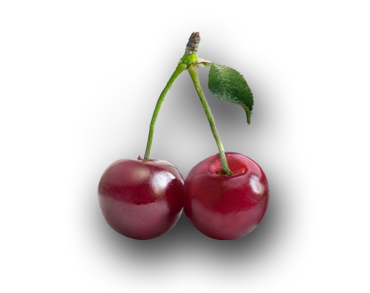| Oblačinska |
This is heterogeneous (assorted) population originating from the Serbian village Oblacine. It’a self-pollenizing cultivar, very fertile (20-30t/ha), resistant to disease, low winter temperatures, springtime frosts, and dry terrains. Due to shallow root system, it cannot be harvested mechanically. The fruit is small in size (2,5g), with consistent proportions and ripeness (3rd decade of June), with red and meaty consistency, juicy, sour and aromatic taste. A small stone (0,3g) separates relatively easily from the flesh, just like the fruit from the stem (without the juice running out), what makes it optimal for automatic pitting. The fruit bears transport well, and can be kept fresh for up to 5 days. It’s very rich in soluble dry matter (18-22%), total sugars, total acids (1,6-2,0%) and vitamins, being multiply useful in the industrial processing. |
| Schateenmorella |
This is an old German variety, which ripens at the start of July. It’s self-pollenizing, with bulky fruit (4,5g) of dark red color and pleasant aroma. |
| Kelleris 14 |
This is a self-pollenizing Danish cultivar, which ripens at the start of July. The fruit has a roundish, heart-like shape, it’s average in size and mass (4,5-5,0g), with semi-firm, red meat, which has yellow veins cutting through, red juice and sweet-sour aromatic taste. The stone is average in size, and easily separates from the flesh. The fruit also separates easily from the stem, and remains closed after separation, which keeps the juice inside, without any leaks. Mechanical harvesting is possible, depending on the grafting. These fruits can be used for industrial processing and consumed fresh. |
| Šumadinka |
A self-pollenizing variety, originating from Serbia, of good fecundity (30-35t/ha), reaching ripeness during the first half of July. It’s resistant to frost and drought, and relatively immune to disease and pests. The fruit is heart-shaped, with rounded tip, chunky (from 6,5g), with semi-firm succulent flesh, and red juice. It has a small stone, which can be removed with average difficulty. It’s sensitive to transport and inadequate for mechanical harvesting. It’s used for fresh consumption and all kinds of industrial processing. |
| Heimans Konservenweichsel |
A self-pollenizing cultivar, originating from Germany, whose trees are resistant to drought and frost, but sensitive to disease (e.i. leaf spot- Coccomyces hiemalis). The fruit is average in size (4-5g), with wide heart-like shape, whose exocarp, flesh and juice are dark red in color and of sour, aromatic taste. The fruit reaches ripeness in the last decade of June. It’s mostly used in industrial processing. |



